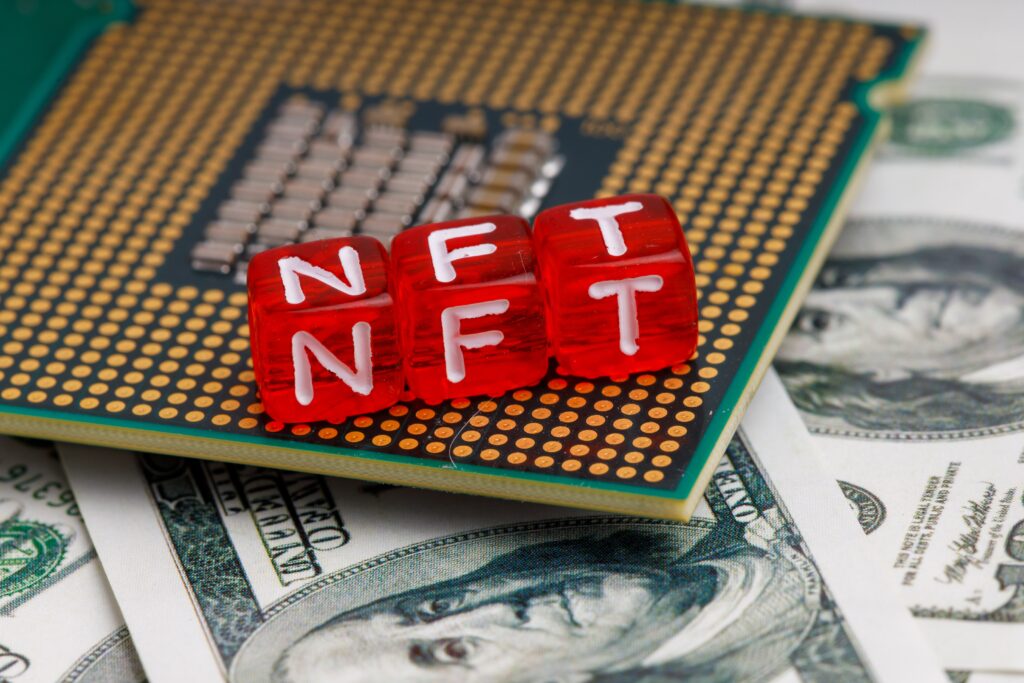Discover the latest advancements in 5G network evolution. Explore the transformative impact of this next-generation technology and gain insights into its potential applications, benefits, and challenges. This comprehensive article delves into the intricacies of 5G network evolution, from its architecture and features to its implications for various industries and everyday life. Join us on this journey to understand how 5G is shaping the future of connectivity and enabling exciting innovations.
5G Network Evolution: Unleashing the Power of Next-Gen Connectivity
Introduction
Welcome to the exciting world of 5G network evolution, where lightning-fast speeds, ultra-low latency, and unparalleled connectivity capabilities converge to revolutionize the way we live, work, and communicate. In this article, we will delve deep into the realm of 5G, exploring its evolution, potential applications, and the impact it is expected to have on various industries and everyday life.
The Building Blocks of 5G Network Evolution
Understanding the Basics: What is 5G?
5G, short for the fifth generation of wireless technology, represents a monumental leap forward in our digital connectivity. With its promises of greater bandwidth, faster data transfer rates, and enhanced network reliability, 5G is poised to redefine the way we access and utilize the internet in a hyper-connected world.
The Architecture of 5G Networks
In order to comprehend the true potential of 5G network evolution, it is important to understand the underlying architecture that powers this groundbreaking technology. 5G networks are composed of three primary components: the Radio Access Network (RAN), the Core Network, and the User Equipment (UE). Let’s explore each of these components and their specific roles in enabling seamless 5G connectivity.
The Radio Access Network (RAN)
The RAN serves as the bridge between mobile devices and the core network in a 5G ecosystem. Comprising a network of base stations and radio antennas, the RAN facilitates wireless communication between the user devices and the core network.
The Core Network
Serving as the central command center of the 5G network, the Core Network is responsible for coordinating and managing various network functions. It enables efficient data routing, authentication, and service delivery, ensuring seamless connectivity for 5G users.
User Equipment (UE)
User Equipment refers to the devices that directly interact with the 5G network, including smartphones, tablets, IoT devices, and more. 5G-enabled UEs are equipped with advanced antenna and modulation technologies to harness the full potential of 5G connectivity.
Evolutionary Milestones: From 1G to 5G
The journey of wireless technology has been marked by groundbreaking advancements with each successive generation, paving the way for the arrival of 5G. Let’s explore the evolutionary milestones that led to the emergence of this transformative connectivity standard.
1G: The Birth of Wireless Telephony
The inception of 1G networks in the early 1980s brought the world its first taste of wireless telephony. These analog networks enabled basic voice communication, albeit with limited coverage and capacity.
2G: The Rise of Digital Communication
The advent of 2G networks in the 1990s marked a significant shift from analog to digital communication. Introducing features like SMS and digital encryption, 2G networks laid the foundation for more advanced mobile services.
3G: Unlocking Mobile Internet
The introduction of 3G networks in the early 2000s revolutionized mobile connectivity by ushering in the era of mobile internet. Enabling faster data transfer rates and limited web browsing capabilities, 3G networks laid the groundwork for the connected world we know today.
4G: The Era of High-Speed Mobile Broadband
4G networks, introduced in the late 2000s, brought unprecedented speed and reliability to mobile broadband. With enhanced capabilities for multimedia streaming, video conferencing, and app downloads, 4G networks paved the way for a wide range of bandwidth-intensive applications.
5G: Transforming Connectivity on a Global Scale
Finally, we arrive at the pinnacle of wireless technology – the era of 5G network evolution. Unleashing gigabit-level data transfer speeds, near-zero latency, and massive device connectivity, 5G promises a quantum leap in connectivity capabilities that will fuel the fourth industrial revolution and beyond.
5G Network Evolution: Key Features and Advancements
Speed and Bandwidth: Breaking the Transmission Barriers
One of the most eagerly anticipated aspects of 5G network evolution is its ability to deliver lightning-fast speeds and abundant bandwidth. With theoretical download speeds reaching up to 10 gigabits per second (Gbps), 5G will enable rapid data transfer, rendering laggy downloads and buffering a thing of the past.
Ultra-Low Latency: Real-Time Responsiveness
Latency, the time taken for data to travel from its source to its destination, is a critical factor in ensuring a seamless user experience. With 5G, latency is expected to be reduced to as little as 1 millisecond (ms), making real-time applications like autonomous vehicles, remote surgery, and immersive augmented or virtual reality experiences possible.
Massive Device Connectivity: The Internet of Things (IoT) Revolution
The explosive growth of IoT devices necessitates a network capable of supporting an unprecedented number of connected devices. 5G’s advanced network architecture ensures efficient connection management, enabling the simultaneous communication of billions of devices, from smart home appliances to industrial equipment, without bottlenecks or network congestion.
Network Slicing: Tailored Connectivity for Diverse Applications
One of the most intriguing advancements in 5G is the concept of network slicing, which allows the creation of multiple virtual networks within a single physical infrastructure. Each network slice can be customized to meet the specific requirements of different applications or industries, ensuring optimal performance and resource allocation.
Enhanced Security and Privacy: Safeguarding the Digital Realm
As our reliance on digital connectivity deepens, ensuring robust security and privacy measures becomes paramount. The 5G network incorporates advanced encryption, authentication, and privacy protocols, safeguarding sensitive data and mitigating the risks of cyber threats.
5G Network Evolution in Various Industries
The transformative potential of 5G extends far beyond faster internet speeds and improved streaming quality. Its impact is expected to revolutionize multiple industries, empowering them to embrace new possibilities and redefine the way they operate. Let’s explore some of the sectors expected to undergo significant transformation thanks to 5G network evolution.
Healthcare: Enabling Remote Patient Care and Telemedicine
The healthcare industry stands to greatly benefit from the implementation of 5G technology. With ultra-low latency and high reliability, 5G enables real-time remote patient monitoring, telemedicine consultations, and even remote surgeries conducted by expert surgeons from around the world.
Transportation: Paving the Way for Autonomous Vehicles
Autonomous vehicles have the potential to redefine transportation as we know it. Leveraging the real-time responsiveness and reliability of 5G networks, these self-driving cars can communicate with each other and traffic infrastructure seamlessly, enhancing safety and efficiency on the roads.
Manufacturing: The Era of Industry 4.0
5G network evolution is a cornerstone of Industry 4.0, the next phase of industrial automation. The Industrial Internet of Things (IIoT) powered by 5G enables real-time data streaming, remote monitoring, and predictive maintenance, enhancing operational efficiency and productivity in manufacturing plants.
Entertainment and Media: Immersive Experiences Unleashed
The media and entertainment industry is poised to undergo a paradigm shift with 5G. With low latency and high bandwidth, 5G enables immersive experiences like virtual reality gaming and ultra-high-definition video streaming, transporting users to virtual worlds and redefining entertainment possibilities.
FAQs
Q: How does 5G network evolution differ from previous network generations?
The key differentiator of 5G is its transformative impact on various industries beyond just faster internet speeds. With its ultra-low latency, massive device connectivity, and network slicing capabilities, 5G enables real-time applications, powers the Internet of Things, and provides tailored connectivity for diverse industries.
Q: Will 5G replace 4G entirely?
While 5G aims to revolutionize connectivity, it will coexist with 4G networks for the foreseeable future. 4G will continue to serve as the backbone for existing applications and devices, while 5G networks will cater to more advanced use cases that require faster speeds, ultra-low latency, and massive device connectivity.
Q: How long will it take for 5G networks to be fully implemented worldwide?
The rollout of 5G networks worldwide will vary depending on factors such as infrastructure development, spectrum allocation, and government regulations. While initial deployments have already begun in several countries, it may take several years for 5G networks to achieve ubiquitous coverage globally.
Q: What challenges does the adoption of 5G present?
The adoption of 5G technology comes with its own set of challenges. These include the need for substantial infrastructure investments, spectrum allocation, and resolving potential concerns around security, privacy, and network coverage. However, the potential benefits and transformative potential outweigh these challenges.
Conclusion
The 5G network evolution signifies a monumental leap forward in connectivity capabilities, reshaping the way we interact with technology and unlocking a world of exciting possibilities. From ultra-fast speeds and low latency to massive IoT connectivity and tailored network slicing, 5G is poised to revolutionize industries, improve quality of life, and drive us towards a more connected and digitized future. Embrace the 5G revolution and prepare for a new era of connectivity like never before.



